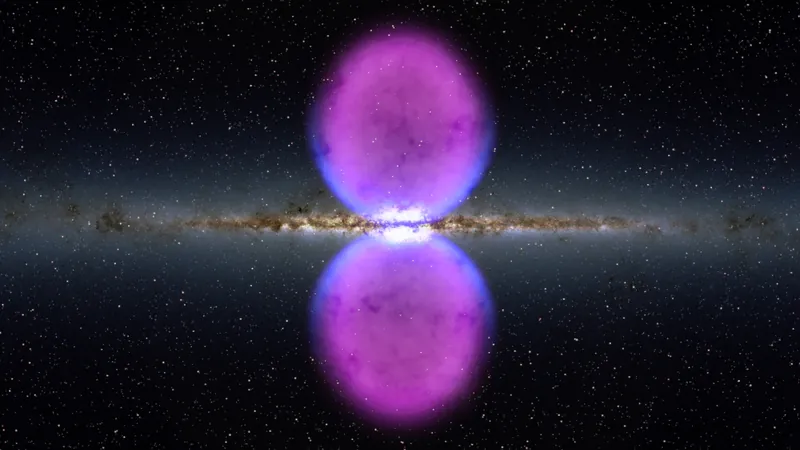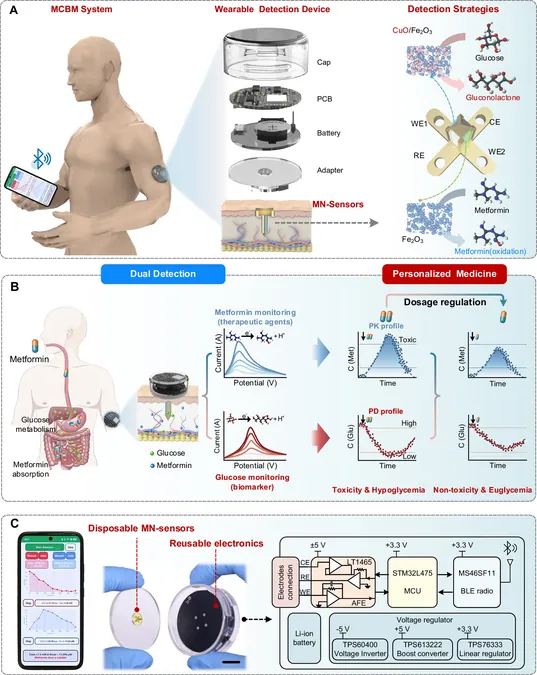
Mysterious 'Ice Cube' Clouds Discovered at Milky Way's Center Point to Recent Black Hole Activity
2025-07-16
Author: John Tan
Strange Structures Found in Our Galaxy
Astounding revelations are unfolding at the heart of the Milky Way! Scientists have uncovered bizarre structures known as the Fermi bubbles—gigantic, balloon-like formations that pulse with energy above and below our galaxy's center. Spanning an impressive 50,000 light-years, these twin orbs of superheated plasma have been in energetic action for eons.
A Shocking Discovery Hidden Within
Using the U.S. National Science Foundation Green Bank Telescope, researchers have stumbled upon an astonishing sight: immense clouds of cold hydrogen gas residing within these scorching Fermi bubbles. How did these frigid structures—relics from a time long past—endure in such a punishing environment?
Ice Cubes in Boiling Water: A Surprising Analogy
According to lead researcher Rongmon Bordoloi from North Carolina State University, these clouds resemble ice cubes dropped into boiling water. Smaller ones melt away quickly, while larger ones can endure longer. The cold hydrogen clouds likely represent remnants from far larger entities that had previously erupted from the galaxy's core.
Indications of a Recent Cataclysmic Event
This unexpected find raises intriguing questions about our galaxy's supermassive black hole. Bordoloi suggests that it may have experienced violent bursts of activity more recently than scientists had previously believed, hinting at a cosmic explosion within just a few million years—an infinitesimal blink in the vast timeline of the universe.
Unveiling the Mystery of the Fermi Bubbles
Initially discovered in 2010 by NASA's Fermi Gamma-ray Space Telescope, the Fermi bubbles are profound mysteries, visible solely in gamma rays and coinciding with yet another enigmatic phenomenon known as the eROSITA bubbles. The heat emitted from these bubbles reaches astronomical levels—over a million kelvins (almost 2 million degrees Fahrenheit)—prompting theorists to propose that they were birthed from a violent eruption of the galaxy's black hole, which propelled twin jets of material into space.
A Cosmic Clock?
The cold hydrogen clouds, detected within the extreme conditions of the Fermi bubbles, range from 13 to 91 light-years across, dwarfing our solar system multiple times over. The mere existence of these clouds serves as a cosmic clock, suggesting that the most recent explosion from our galaxy's black hole was much more recent than initially thought.
A More Active Galactic Center
What does this all mean for the Milky Way? While the exact timing of these black hole eruptions remains unclear, it's evident that the activity around our galaxy's heart has been far more intense in recent history than we had assumed. Delving deeper into the significance of the Fermi and eROSITA bubbles could reveal the galaxy’s tumultuous past and offer truth to the chaos echoing from its center.





 Brasil (PT)
Brasil (PT)
 Canada (EN)
Canada (EN)
 Chile (ES)
Chile (ES)
 Česko (CS)
Česko (CS)
 대한민국 (KO)
대한민국 (KO)
 España (ES)
España (ES)
 France (FR)
France (FR)
 Hong Kong (EN)
Hong Kong (EN)
 Italia (IT)
Italia (IT)
 日本 (JA)
日本 (JA)
 Magyarország (HU)
Magyarország (HU)
 Norge (NO)
Norge (NO)
 Polska (PL)
Polska (PL)
 Schweiz (DE)
Schweiz (DE)
 Singapore (EN)
Singapore (EN)
 Sverige (SV)
Sverige (SV)
 Suomi (FI)
Suomi (FI)
 Türkiye (TR)
Türkiye (TR)
 الإمارات العربية المتحدة (AR)
الإمارات العربية المتحدة (AR)